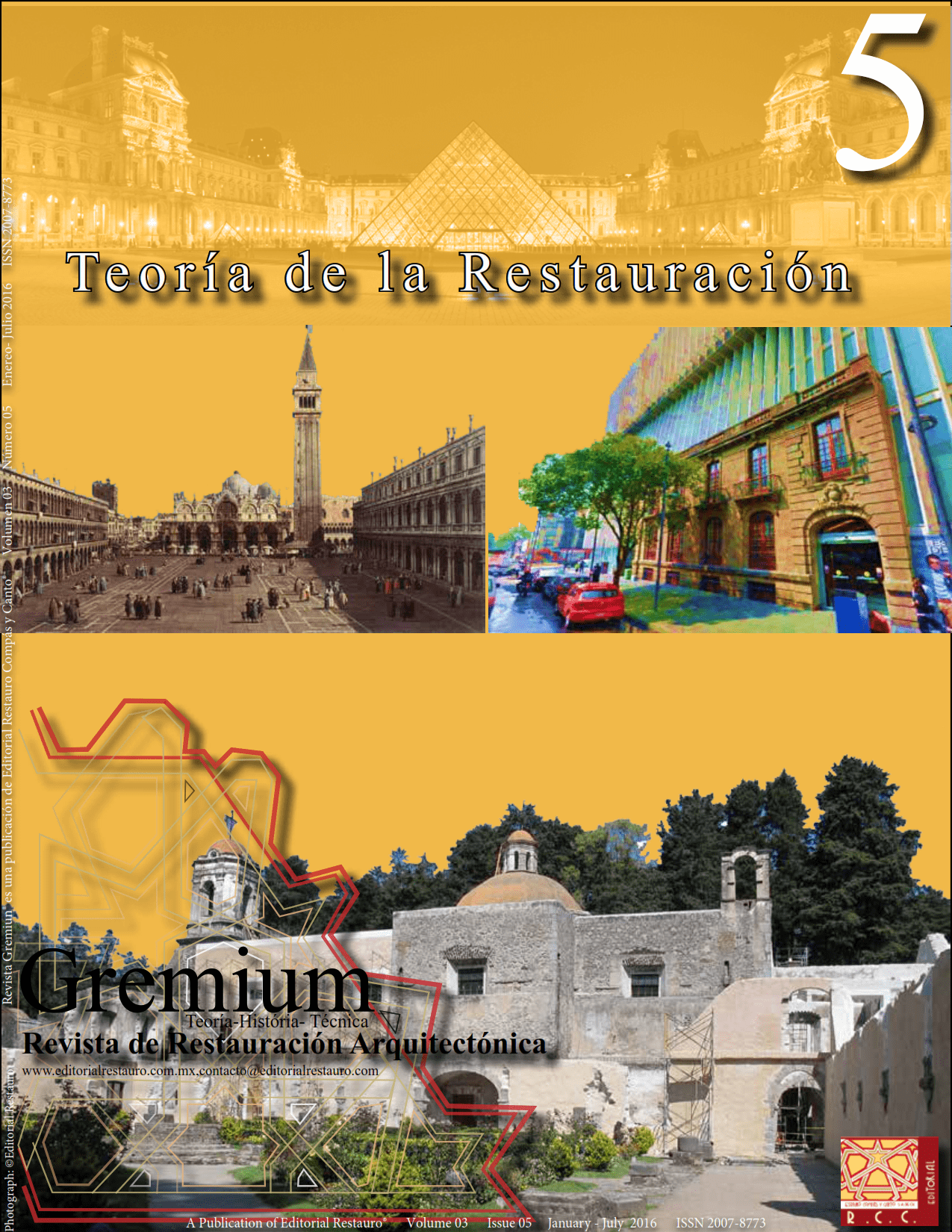The Charter of Venice in the 21 st century
DOI:
https://doi.org/10.56039/rgn05a04Keywords:
architectural conservation, the venice charter, international regulations for the conservation of heritageAbstract
The Venice Charter (1964) meant -50 years ago- an important step for the worldwide application of normative principles as for theory and the practice of the architectural restoration. The objective of this article is to present and to recognize, fifty years after its promulgation, the importance and the influence of the Venice Charter in the theory and practice of the restoration and urban-architectural conservation. This study is the result of the deductive analysis of the facts that have been evidenced along the half century of existence of this document. We can affirm that to the date that its statements and definitions have universal validity because its technical postulates set the tone so that the criteria, the philosophy and the methods had a wider notion of the monuments as well as of the historic centers: their consequent rescue, conservation and enhancement. The application of the doctrinal postulates of the Venice Charter has experienced a relentless and permanent evolution of concepts. These range from the diverse ways of looking at the monuments and the heritage sites, including the territory, to the landscapes and cultural routes, to the new notions of rescue, restoration, conservation and safeguarding, according to the transformation of the social, economic, cultural and tourist life of the monument areas, adding to this, the impact that it has had in the multidisciplinary technical formation of the responsible for their safeguarding.
Downloads
Downloads
Published
Issue
Section
License
Copyright (c) 2022 Gremium

This work is licensed under a Creative Commons Attribution-NonCommercial-ShareAlike 4.0 International License.























